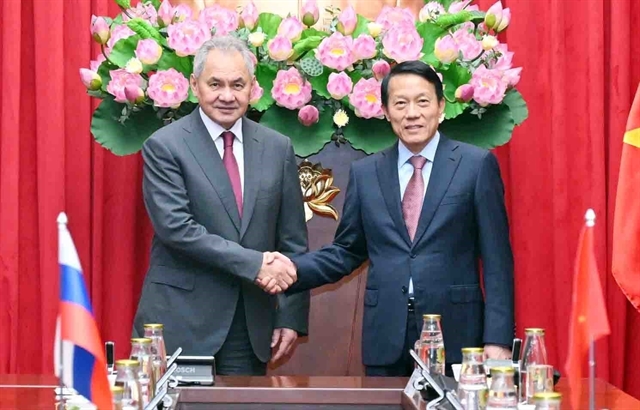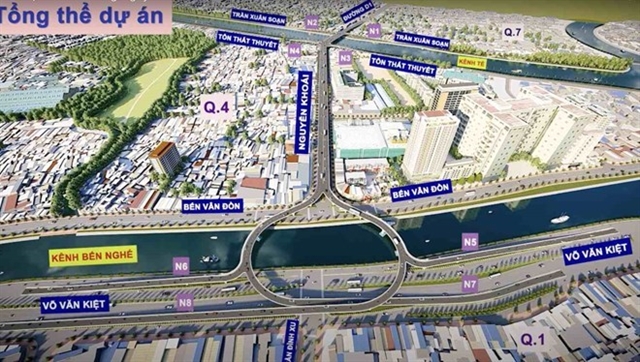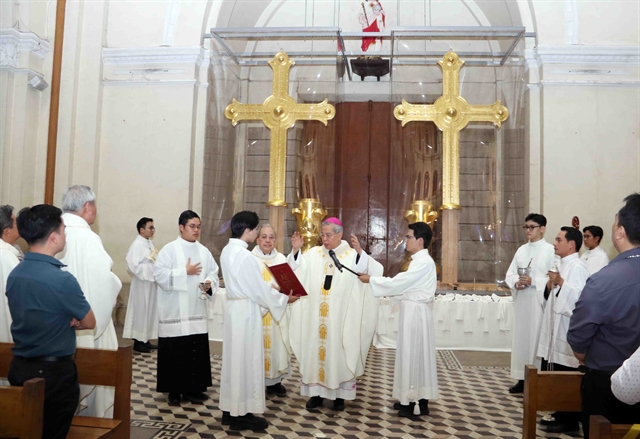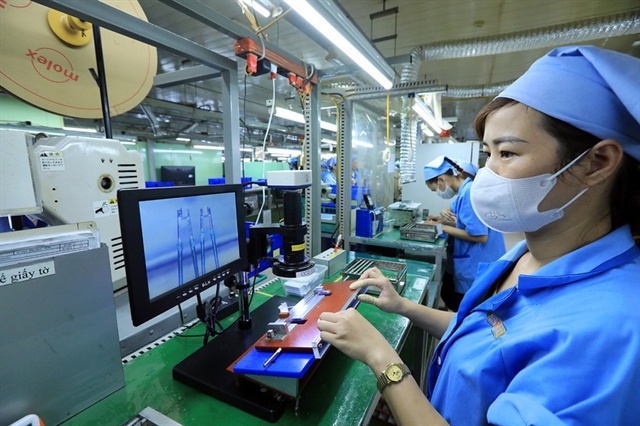 Politics & Law
Politics & Law

 |
| Design of the Nguyễn Khoái Bridge and Road project connecting Districts 7, 4 and 1 in HCM City. — Photo Courtesy of the HCM City Department of Transport |
HCM CITY — An investment of more than VNĐ42 trillion (US$1.65 billion) has been approved for the development of four key infrastructure projects in HCM City aimed at improving connectivity and driving economic growth.
The Office of the municipal People's Committee announced in February that the city will begin construction of four projects this years, including Ring Road 2, Nguyễn Khoái Bridge and Road, Xuyên Tâm Canal renovation and the north bank of Đôi Canal.
The development of Ring Road 2 within Thủ Đức City includes two significant sections. Section 1, with a length of 3.5 kilometres, stretches from Phú Hữu Bridge to Võ Nguyên Giáp Street. The 2.8km-long section 2 extends from Võ Nguyên Giáp Street to Phạm Văn Đồng Street.
This project will require land clearance to facilitate the construction of parallel roads on both sides.
Each road will have a width of 17m and will accommodate three lanes of traffic.
The total investment is about VNĐ13.8 trillion ($543 million), including the site clearance costs of VNĐ7.5 trillion ($295 million).
The project requires the acquisition of some 61 hectares of land, affecting 1,166 households along the streets.
The project is slated to start in the third quarter of 2025 and be completed in 2027.
After completion, the project will help reduce traffic congestion, connect major port clusters such as Cát Lái, Phú Hữu and Trường Thọ, and promote urban development in the east of the city.
The second project is Nguyễn Khoái bridge and a road leading to the bridge costing more than VNĐ3.7 trillion ($145.5 million).
It connects Districts 7, 4 and 1.
According to the plan, the construction of the bridge and the road in District 1 will start in the fourth quarter of this year.
The project extends nearly five kilometres in total, comprising a bridge section of approximately 2.5km with a width ranging from 6.5m to 25.5m.
Furthermore, the project encompasses a road section exceeding 2.3km in length, with a width ranging from 26.5m to 61.5m.
The Xuyên Tâm Canal renovation project has a total investment of VNĐ17.2 trillion ($676.5 million), including the cost of compensation for site clearance of VNĐ14 trillion ($550.6 million).
The 9km-long canal runs through Bình Thạnh and Gò Vấp districts, impacting 2,215 households.
This project will revitalise the canal area through the renovation and landscaping of both sides, including the construction of 6m-wide roads, 3-4m-wide sidewalks, and the creation of inviting green spaces.
The canal itself will undergo a comprehensive rejuvenation process, including dredging to a depth of 3.5m and widening to a range of 20-30m.
A component of this project involves the implementation of a modern wastewater collection system.
The project is anticipated to be completed and fully operational by 2028, bringing significant environmental and aesthetic benefits to the surrounding community.
With a total investment of VNĐ7.4 trillion ($291 million), the Đôi Canal North Bank renovation project in District 8 will significantly impact the area.
Site clearance costs account for a substantial VNĐ6 trillion ($234 million), and the project will affect 1,633 households.
A large-scale infrastructure project is set to begin in the third quarter of 2025, aiming to enhance transportation and flood control along the canal.
The plan includes constructing 4.3km of embankment, dredging the canal bed, and expanding adjacent roads.
Key developments include the construction of Nguyễn Duy extended road and Hiệp Ân 2 Bridge, along with the installation of modern drainage and lighting systems.
Passenger wharves will also be built to improve waterway transport in the area.
The project is scheduled for completion in 2028 and will improve connectivity and urban infrastructure in the area. — VNS




